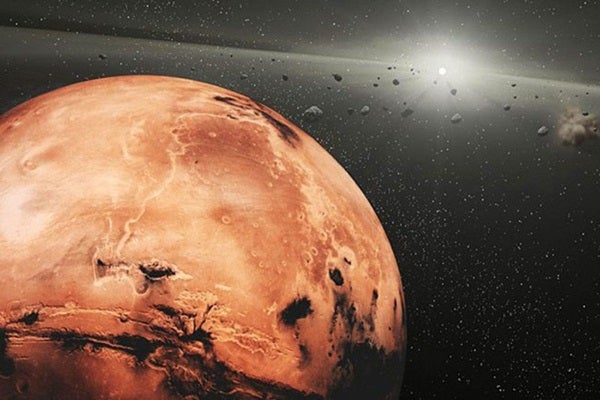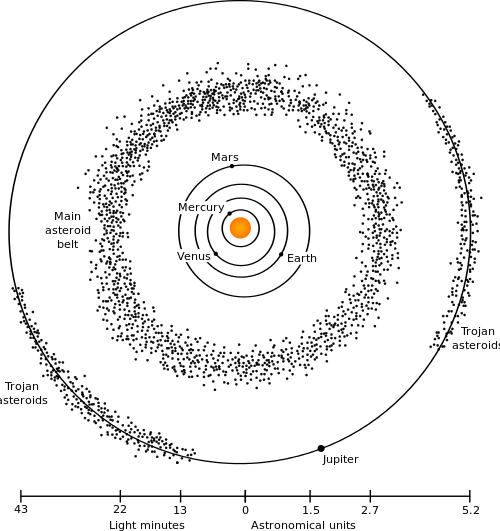The find was unveiled at the Division for Planetary Sciences meeting held by the American Astronomical Society in Provo, Utah, last week. Apostolos Christou of the Armagh Observatory and Planetarium in Northern Ireland and colleagues were intrigued by the odd grouping of Trojans around the planet Mars. When they dug deeper into the asteroids’ possible origins, they realized that eight of Mars’ 10 Trojans all originated from the same parent body, and were “spun off” that parent by the effects of sunlight.
By definition, Trojan asteroids gather at specific points in a planet’s orbit, grouping at the L4 and L5 Lagrange points due to orbital interactions. In practice, what this means is Trojans either lead or trail a planet in its orbit by 60 degrees, sharing the planet’s journey around the Sun but posing no threat of collision with that planet (though Trojans can collide with each other). Mars’ Trojans in particular are puzzling. Of the 10 known, nine trail the planet. Eight of these share orbits so similar that they are assumed to originate from a single parent body — the largest of the group, named Eureka.
Mars’ other two Trojans haven’t undergone the same rotational speed-up. One is already rotating fairly chaotically; Christou explained that because the YORP effect is small, the asteroid’s tumbling overpowers and nullifies it. The other Trojan lies close to the orbital zone of stability that keeps Trojans in place; any small bits spun off by the YORP effect would likely go sailing off into unrelated orbits, rather than stick around as fellow Trojans. Thus, sunlight’s effects could not only create, but also destroy or prevent asteroid families from forming.
Learning more about Mars’ Trojans offers two major benefits. First, “These could be resources for trips to Mars,” says Christou. “If they have hydrated minerals then you can exploit those for fuel.” And second, the YORP effect could also impact asteroids near Earth, helping to explain the origin of several near-Earth asteroid pairs and triplets and improving our understanding of the rocky occupants that share the space closest to home.











